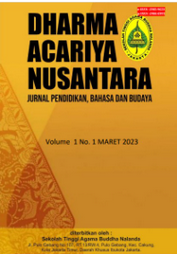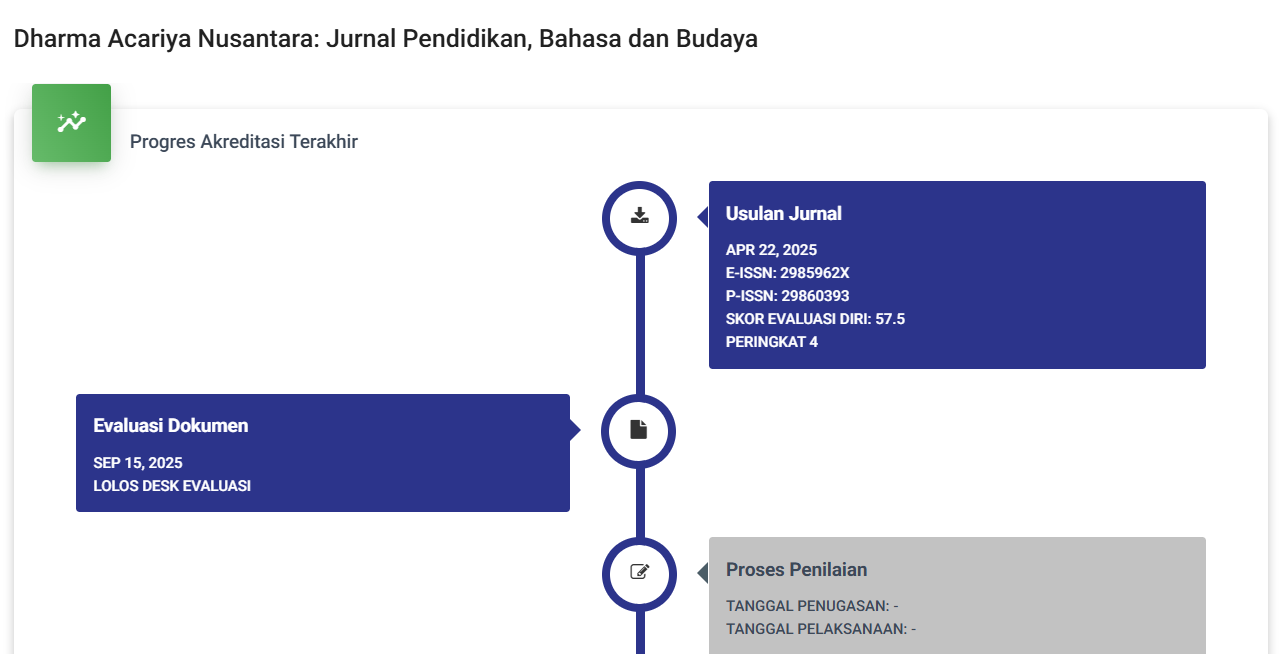Manajemen Seni Pertunjukan di Sanggar Sri Indera Bupala Kecamatan Bengkong Kota Batam
DOI:
https://doi.org/10.47861/jdan.v2i2.1239Keywords:
Management, Arts, Performing ArtsAbstract
This research aims to know, describe and explain how Performing Arts Management in Sanggar Sri Indera Bupala, Bengkong District, Batam City. This type is qualitative research with a descriptive method. The research instruments are the researchers themselves and are assisted by supporting instruments such as stationery, cameras and voice recorders. Data were collected through literature studies, observations, interviews and documentation. The steps of analyzing the data are data reduction, data description and conclusion. The results of the study show that the steps in the management of Sanggar Sri Indera Bupala are planning, organizing, actuating, and controlling. The planning stage includes determining the name, objectives, policies, procedures, and work programs consisting of long-term work programs, short-term work programs, and incidental work programs. The level of organization in the Sri Indera Bupala studio is to give positions to several members of the management as a form of sense of responsibility for the members in the studio. At the mobilization stage at the Sri Indera Bupala studio, the studio leaders gave direct briefings to studio members and also provided motivation to studio members in the form of rules such as, if studio members are diligent and active in participating in training, they will have the opportunity to continue to participate in studio performances, both scheduled and unscheduled. As well as other mobilization is to carry out all activities and programs that have been planned and determined in advance. The supervision stage at the Sri Indera Bupala studio is the studio leader who directly supervises in coordination with the management and team involved both during the rehearsal process and during the performance.
References
Amniaty, H. (2018). Manajemen Sanggar Tari Sarai Sarumpun di Gunung Sarik Kec. Kuranji-Kota Padang. Laga-Laga: Jurnal Seni Pertunjukan, 4(1), 71-84.
Hartono, P. (2020). Peran Sanggar Seni Lati Mojong dalam pengembangan seni tari di Desa Ulusalu Kecamatan Lati Mojong Kabupaten Luwu. Palopo.
Indrayuda. (2012). Eksistensi tari Minangkabau. Padang: UNP Press.
Indrayuda. (2013). Tari sebagai budaya dan pengetahuan. Padang: UNP Press.
Jazuli, M. (2013). Manajemen seni pertunjukan. Bandung: PT. Graha Ilmu.
Kayo, R. (2015). Manajemen. Jakarta: PT. Bumi Rajagrafindo Persada.
Moleong, L. J. (2011). Metode penelitian kualitatif. Bandung: Remaja Rosdakarya.
Moleong, L. J. (2012). Metodologi penelitian kualitatif (edisi revisi). Bandung: PT Remaja Rosdakarya Offset.
Pujiwiyana. (2010). Pembinaan paguyuban seni tradisional. Yogyakarta: Penerbit Elmatera.
Robbins, S., & Coulter, M. (2010). Manajemen (Edisi Kesepuluh, Jilid 1). Jakarta: Erlangga.
Yulistio, A. (2011). Manajemen pengamen calung Sanggar Seni Jaka Tarub di Kabupaten Tegal (Skripsi, Jurusan Sendratasik, FBS UNNES). Semarang: FBS UNNES.













